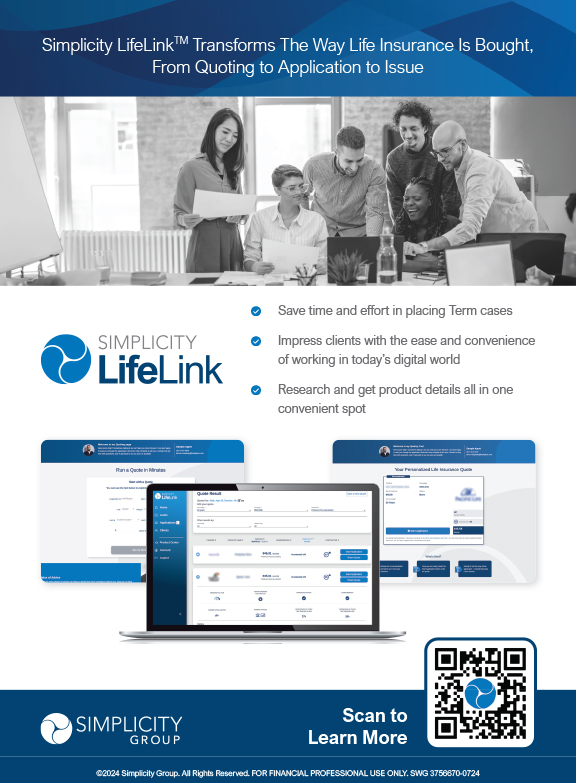How can any middle- or upper-income consumer believe that long term care insurance is a luxury, not a necessity? Yet we see a single-digit market penetration for long term care insurance staring into the face of 80 million baby boomers starting to turn 65!
Having been in this market for more than 20 years, I do wish the objections would change—at least that would make it more interesting. Yet they stay the same.
As an industry, we’ve allowed people to tell us that:
1. They don’t want long term care insurance because they are never going to a nursing home. Instead of us telling them this can be the only thing that keeps people out of nursing homes by providing money to hire help at home.
2. They are going to self-insure. Without input from us about the true cost of doing that by calculating care at future costs and the lost investment opportunity of pulling those funds out, particularly if it is a bad time to do so.
3. They’re too young. Without us explaining they will pay more for coverage the longer they wait because they will have to buy a larger benefit due to inflation and that there’s a good chance they won’t be able to qualify medically for a plan if they wait.
4. They can’t afford the premium because of the bad economy. Instead of us telling them they simply cannot afford not to protect their retirement with LTCI.
As baby boomers transition from the accumulation phase to the distribution phase, advisors are in demand to construct an income stream that will last 20 to 30 years—and even longer. Is there enough in the proverbial nest egg? Can a financial plan that guarantees one won’t outlive her money be constructed for people who spend more years in retirement than they work?
The answer is absolutely not, if the need to plan for long term care is ignored. Let’s take the gloves off. Do we care about our clients or not? Do we care about the person we see at the grocery store, sit next to at church and/or go to PTA meetings with? Our neighbors, our friends and, yes, our family? Are we talking about how essential it is to have this need taken care of in order to enjoy retirement? Because planning for an income to last 30 years means you don’t want to have a bump in the road.
Here’s a news flash: Long term care isn’t a bump in the road. It’s an earthquake. The resulting crater will swallow the best-laid retirement plan. Table 1 illustrates approximately how fast a couple can rip through $500,000 when only one of them needs care at today’s cost of about $75,000 a year for 10 hours of home care.
However, in an economy similar to the one we have endured recently, we can change the investment yield to 4 percent and Table 2 is a more nearly accurate picture of how this could look.
Oh, the client has $5 million dollars and can self-insure? Since when has any financial planner ever told a client with $5 million to forget about homeowner’s insurance and pay full price for replacing a home? To pay full price for hospital and doctor bills? To pay full price for real estate, vehicles, art, jewelry and whatever you do, be sure to pay top dollar for the new swimming pool?
However, I think there is a misconception about just how many Americans have several million dollars. The Financial Research Corporation says that less than 5 percent of households ages 45 to 74 have more than $1 million.
Are you starting to see how important it is to get to Americans with worksite long term care insurance while they are young enough to afford the premium and healthy enough to pass underwriting?
And for those who do have a few million, I agree 100 percent with Harley Gordon, a founding member of the National Academy of Elder Law Attorneys, that long term care insurance is really income protection, not asset protection. The person with $3 million who plans to earn 5 percent in retirement income of $150,000 had better have a great plan if half of that income has to pay for caregivers starting next month because he had a severe stroke. And what happens when the $3 million shrinks to $1.5 million, as many have seen in the recent economic downturn? And if investment earnings shrink to 3 percent, not 5 percent? And the real clincher is if the 5 or 6 percent growth rate over the last 20 years continues, long term care costs will triple in the next 20 years. In 2030, we can be looking at more than $200,000 a year, not $75,000 a year.
That growth rate can’t continue, you say? I think something called the rule of supply and demand says it can. The demand for long term care will be greater than ever in the history of the world with an aging population and in this country with 80 million baby boomers entering the care recipient years. The supply of caregivers is already at an all-time low.
It Can’t Possibly Happen to Me
When your client denies that anything will ever happen, try asking when the last time was that his nightly news station reported on a non-celebrity having a massive stroke? Not exactly news, since at least 700,000 people in the United States have a stroke every year, with one out of four being under age 65 (Centers for Disease Control and Prevention Statistics).
My favorite cousin while I was growing up was Carolyn. I loved it when she would babysit me because she would show me her beautiful dance dresses. She had every color and was the best dancer I’d ever seen. Her brown eyes sparkled with happiness when she danced and she always had her most beautiful smile for me. She had a massive stroke at age 61 and has been paralyzed on the right side of her body and without speech for nine years. Her mind is fine. I know she remembers those dancing days.
Most people need our help an it’s our job to be sure they understand they need our help. Since when do we wait for people to walk up to us and say they need life insurance, disability income insurance or retirement planning services? The difference here is that long term care insurance can be much easier to prospect for. Especially if you are a baby boomer, you will find that most of your peers are experiencing caregiving responsibilities for a family member and have learned the hard way that it isn’t covered by anything except Medicaid, which brings a plethora of limitations.
I continue to believe that long term care is the real health care crisis in America and we only have a few years to get long term care insurance to the masses in time to make a difference.
























